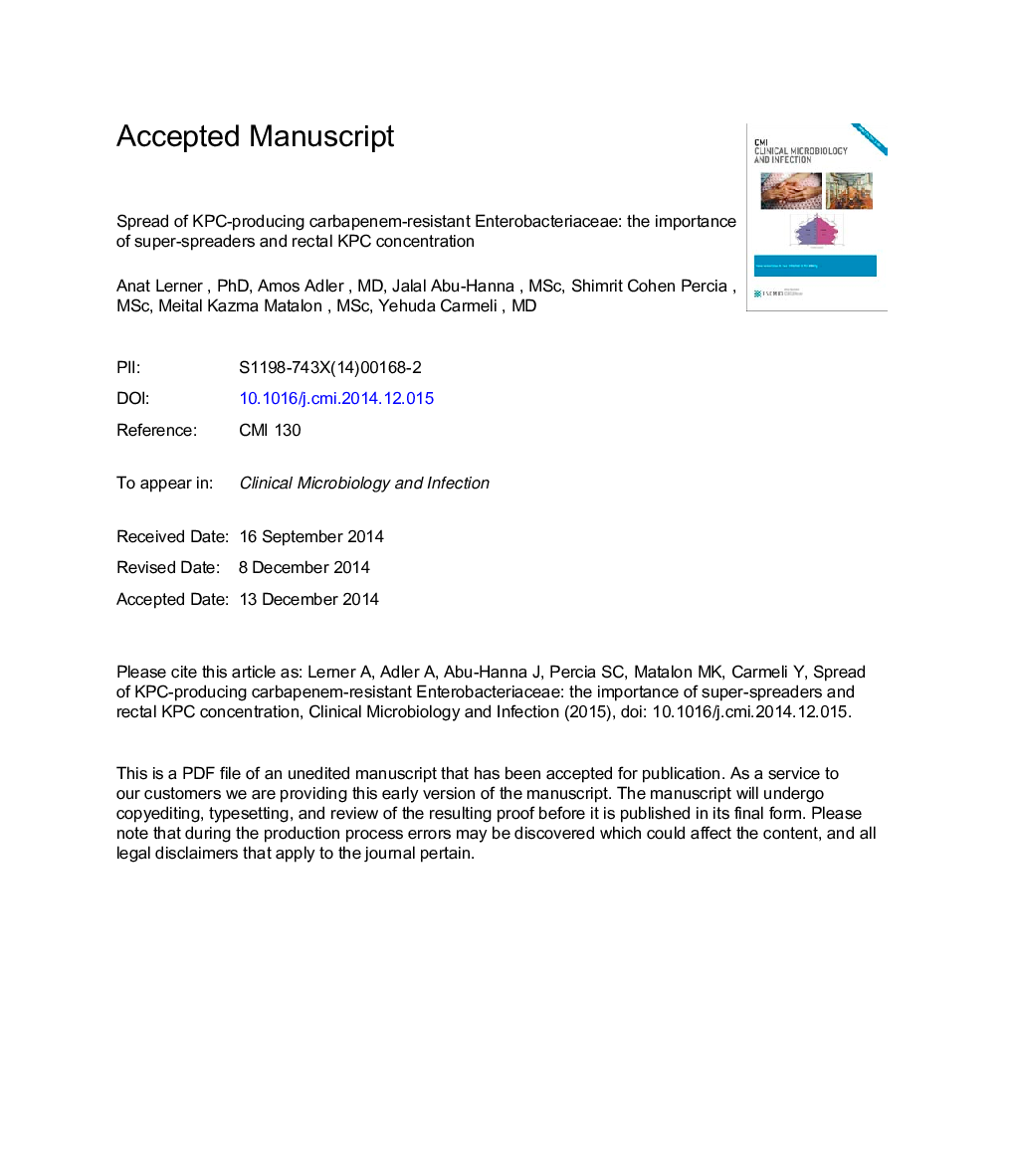| Article ID | Journal | Published Year | Pages | File Type |
|---|---|---|---|---|
| 6129642 | Clinical Microbiology and Infection | 2015 | 27 Pages |
Abstract
Klebsiella pneumoniae carbapenemase (KPC)-producing Klebsiella pneumoniae is a pathogen causing an epidemic of carbapenem-resistant Enterobacteriaceae (CRE) in healthcare settings in developed countries. The spread is primarily by patient-to-patient transmission. Understanding the mode of spread is important for designing effective control measures. We studied CRE dissemination by quantifying environmental contamination from the vicinity of 34 carriers using selective contact plates. We examined rectal CRE concentrations and clinical characteristics and correlated these with environmental contamination. Eight (24%) carriers were non-spreaders: no CRE was detected in their vicinity. Faecal continence was the only independent predictor of being a non-spreader. Among the 26 spreaders, we identified a distinct group of six (18%) super-spreaders who accounted for 79% of environmental colonies detected. Super-spreaders were likely to have high rectal CRE concentrations and to have been admitted with respiratory disease. CRE spread to the environment follows the 20/80 rule: 20% of carriers are responsible for 80% of shedding and may play a central role in CRE transmission.
Keywords
Related Topics
Life Sciences
Immunology and Microbiology
Microbiology
Authors
A. Lerner, A. Adler, J. Abu-Hanna, S. Cohen Percia, M. Kazma Matalon, Y. Carmeli,
